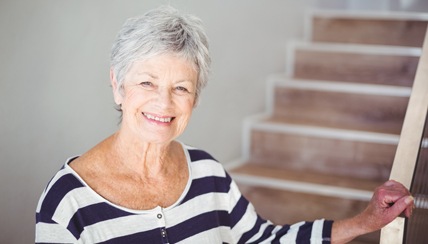Osteoporosis: Lifestyle Management
This information was reviewed and approved by Mehrnaz Maleki Fischbach, MD (7/1/2019).
 Clinical Trials
Clinical Trials
For more than 100 years, National Jewish Health has been committed to finding new treatments and cures for diseases. Search our clinical trials.

 Falls are a leading cause of fracture in people with osteoporosis, because the disease weakens bones, making them less sturdy and more susceptible to breaking. Consequently, even a minor fall can cause harm, most commonly to the hip, wrist or spine, though all bones can be fractured. The elderly are also at risk for falls.
Falls are a leading cause of fracture in people with osteoporosis, because the disease weakens bones, making them less sturdy and more susceptible to breaking. Consequently, even a minor fall can cause harm, most commonly to the hip, wrist or spine, though all bones can be fractured. The elderly are also at risk for falls.